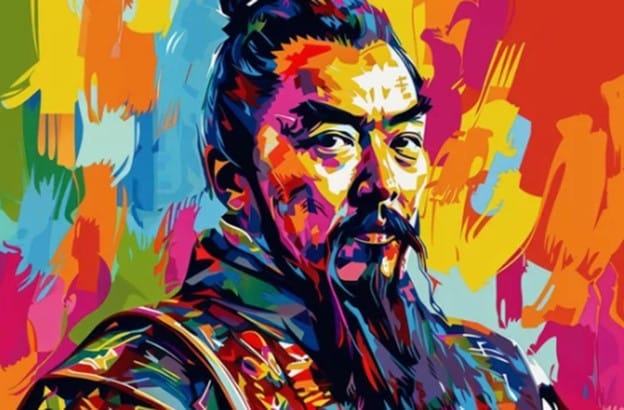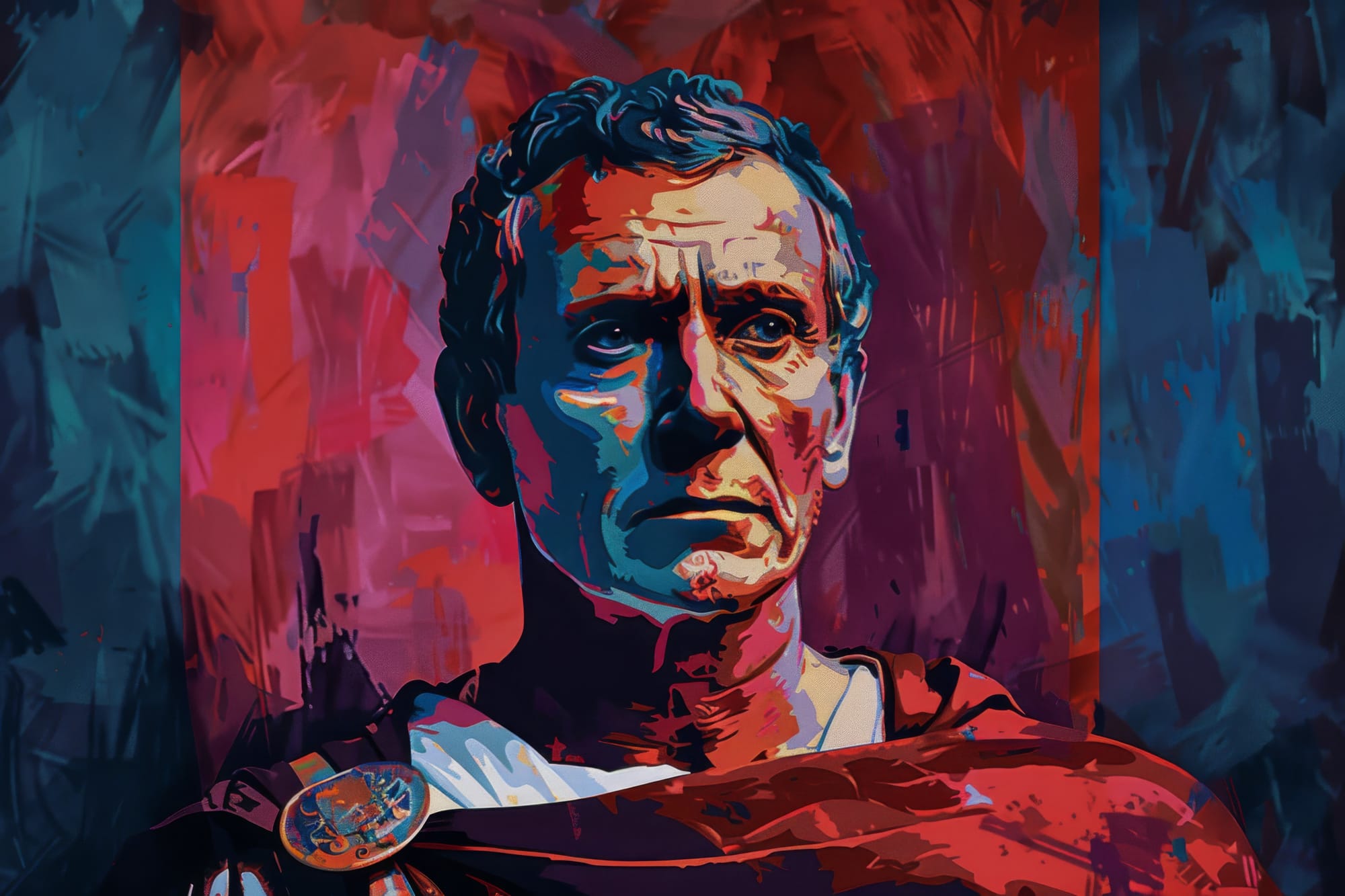What is Strategy?

With nearly two decades of military service, I used to think I knew what strategy was. The more I study the subject, the more I realize how difficult it is to understand as a discipline.
I mean, I went to school. I got an MBA, so I should know something about business strategy, right? Hardly. What about my work? I’ve been doing strategic stuff for the Air Force; I should know a few basics, right?
That’s what I thought until a few months ago when a senior leader walked into the office and asked me and a colleague to define it. I didn’t know what to say, so I made silly noises instead of answering.
For most people, strategy is a black box of concepts that seem ambiguous and hard to describe. Mainly because of the complexity and hard to quantify topics involved with thinking through the unknown and doing something new. But also, because we are fraught with cognitive biases, the world is noisy, and managing change is incredibly difficult. My experience suggests that understanding strategy requires an appreciation for clarity in communication and planning. It requires respect for the biases that we all have, a genuine appreciation for the qualitative, and an ability to manage change artfully.
Strategy without tactics is the slowest route to victory. Tactics without strategy is the noise before defeat. - Sun Tzu

Strategy, as we all know it, has military origins. However, the world has learned that strategic concepts can be cross-functional and have many practical applications. At its roots, the Greek form of the word translates comfortably into “army leader” (stratos for army and egos for leader). According to James Diggle from Cambridge, the first recorded definitions were a commander’s plans and the process of waging war. Today, these concepts are applied in military operations, business, sports, and everywhere in our personal lives.
Before the Greeks, Sun Tzu defined strategy as a comprehensive plan that involves understanding oneself and the enemy to achieve victory with minimal conflict. Shaped by the wars in 6th-century Asia, Sun Tzu has been called the father of Eastern military strategy. His Art of War, a timeless masterpiece, influenced many strategists worldwide ever since his bamboo texts were discovered in the 1970s. This discovery not only made strategy 'cool' but also shed light on the profound influence of Sun Tzu's teachings on modern strategic thinking.
From Sun Tzu’s perspective, strategy is a way of thinking about one’s place in the world. He defined war as a complex interplay of various factors determining success in conflict. His writing emphasized preparation, adaptability, and understanding of one’s and the adversary’s capabilities. Of all the military strategists, this is the most robust framework for viewing the strategic environment and understanding one’s place in it.
Other great military strategists have left their mark. During the Renaissance in Italy, Niccolò Machiavelli defined strategy as integrating military operations with political objectives. The Napoleonic Wars influenced both Clausewitz (On War) and Jomini (Les principles de la stratégie), who defined strategy as “the use of the engagement to attain the object of war” and “the art of directing military movements and operations to achieve decisive results,” respectively. These views are myopic. With narrowly focused writing framed on war, conflict, and the relationship with the state, it is helpful here. Attempts to transpose their concepts to business strategy are exceedingly tricky, and relating their work to anything outside politics becomes unclear.
Yet, the principles from The Art of War offer a timeless framework that is easily relatable to business- emphasizing strategic thinking, adaptability, and competitive awareness. Further, The Art of War appears to describe strategy as more art than war, but we can’t let the creative energy of art run away with our strategy. We must manage it by binding art in a way that makes sense based on what we already know about the world.
Here, a historical digression into management science is necessary.
Military leaders and business managers needed frameworks for understanding complex systems as the world became more dependent on technology. In 1928, a philosophical biologist, Ludwig von Bertalanffy, published Modern Theories of Development, which paved the way for “General Systems Theory.” At a time when the world needed a robust framework to get us to think more deeply about challenges, GST provided a new framework for interpreting a complex world—one that viewed the world as full of open and closed complex adaptive systems with balancing and reinforcing feedback loops. This theory provided tools for managing complexity and adapting to chaos more effectively.

Bertalanffy’s theory helped researchers from all disciplines more readily accept the central challenge of life: managing change. As Chakravarthy and Doz put it in 1992, “We must address the 'central evolutionary and transformational processes' through which organizations renew themselves rather than simply focusing on single administrative systems.”
Bruce Henderson then applied the study of these evolutionary features of systems to business. The founder of Boston Consulting Group (BCG) built the most robust framework for understanding business and incorporated a more robust framework for thinking about the world in Sun Tzu terms.
His contributions, mainly developing the experience curve and the growth-share matrix, fundamentally changed how businesses approached strategy. These frameworks highlighted a gap in understanding business in the 1960s. They shifted the focus from just financials to a more comprehensive understanding of market dynamics and competitive positioning.
Along with Henderson came Forrester, who significantly contributed to management science by developing system dynamics, a new take on understanding systems. Like Bertalanffy’s GST, system dynamics is a methodology for modeling and simulating the interactions within complex adaptive systems, allowing businesses to analyze and predict the behavior of systems over time. This approach helps managers understand the feedback loops and time delays that affect their organizations, but through modeling and simulation, enabling more informed decision-making.
Sun Tzu's approach and systems thinking share several similarities in their approach to strategy despite originating from different contexts and eras. Both emphasize a holistic view of complex environments and the importance of understanding interconnections and dynamics within a system. Highlighted by Derek Yuen in his Deciphering Sun Tzu, Yuen describes Chinese strategy as grand-strategic and systemic, permitting one to employ all possible means of force for survival. This holistic approach presents war as a global struggle and could refer to the entire range of difficulties one could face at any time in one's life, not just those related to war. In the Chinese cultural sense, this perspective legitimizes all forms of conflict along the competition-conflict continuum, extending the boundary of the competitive system. This view suggests that interdisciplinary approaches to complex issues and higher-order thinking about the world are required, much like systems thinking.
Strategic Management

To do this work, people need processes to understand ambiguous or confusing business environments. Especially when planning over extended time horizons. Many successful business strategists have developed tailored frameworks to help bind their systems to only what they can manage. One of the most renowned business strategists in modern business, Michael Porter, defined strategy as creating a unique and valuable position involving different activities from competitors. His Competitive Strategy became the world’s first business best seller. According to Porter, strategy is not about operational effectiveness or being the best but about being unique in a dynamic field of competitors. He emphasized that strategic decisions must involve consciously doing something differently from competitors to achieve sustainable advantage.
Porter’s work has significantly influenced how companies approach competition and strategy development. His “Five Forces” framework and SWOT analysis tools have helped companies compete through cost leadership, product (or service) differentiation, and market segmentation. These frameworks have become foundational tools in strategic management, helping businesses analyze their environments, identify competitive advantages, and make informed strategic decisions.
Now, Porter may have been fighting an uphill battle with academia here. Still, I’ve found his analytical and prescriptive approach to be more management science than art and too rigid for emergent challenges and wicked problems.
For an evolution of Porter’s work, I looked to Roger Martin. A 15-year student and colleague of Porter’s, Martin, described strategy as “an integrated set of choices that compels desired customer action.” Martin developed a set of questions for managers to do strategy. They are:
· What is our winning aspiration?
· Where will we play?
· How will we win?
· What capabilities must we have?
· What management systems are required?
Martin describes these questions as an integrated cascade of choices. The answers to each question inform the management practices of the other, maintaining strategic alignment and offering something for managers and planners.
Strategy as Art

Having identified the difference between planning and strategy, what Martin presents to the field is an artistic view of strategy in a way managers can appreciate. I think of these as internal choices to compel action from others as an artistic expression. I think Martin was thinking like Sun Tzu when he described the ultimate goal: “The supreme art of war is to subdue the enemy without fighting.”
Whether from strategy, management, or even marketing, persuasion is the goal. In the military sense, I want to persuade an adversary to submit. In business, I want to persuade customers to buy my product. And this is where the two come together. It’s why the other military strategists are only helpful in political contexts, and analytical managers struggle to grow into leaders.
This view of the art of persuasion suggests leaders understand the importance of qualitative research. Martin cites Elliot Eisner as teaching him about the value of qualitative research. In all the social sciences, facts based on numbers through quantitative research tend to overlook the quality of the customer (or adversary) experience. The customer's sensitivity to loss, interactions with the environment, sense of comfort, and ability to learn about their environment all play critical roles in business and military strategy. They are all quantitatively measurable in some sense and not nearly as sexy sounding as “data analytics” or “artificial intelligence.” Still, they have limits in their ability to persuade in high-stakes and emotionally charged contexts.
This understanding of the qualitative experience presents the boundary for overlapping the two disciplines of military and business strategy. The qualitative approach to understanding the world is the perspective that tells me I have someone whom I want to persuade, whether they are an adversary or a customer. Pursuing the “right” choice in an ocean of “good” choices compels someone to some behavior. The shift from the analytical and toward the artistic to some decision-making process can be applied to any situation and audience to minimize buyer’s remorse in making a purchase decision or agreeing to an alliance.
It’s been well documented that the ability to read and write is the most determining factor of success in a person’s life. Except for the most junior levels of the military and business careers, qualitative expertise will drive more people to advanced levels than quantitative capabilities ever will. Understanding the customer, the team, or the adversary will get you promoted in both industry and the profession of arms far more frequently than your ability to crunch numbers ever will.
In my military and business strategy studies, I’ve appreciated the work of Sun Tzu, Michael Porter, and Roger Martin. Strategy may be better described as an art, but it’s still in a world of military and business managers trying to make sense of it. Despite coming from vastly different backgrounds and times, they share several commonalities in their approach to strategy. They all seem to have a firm grasp on competitive advantage, the importance of (and the difference between) strategic planning, adaptability, understanding the environment, and choices and trade-offs.
Focus

All three strategists emphasize the importance of gaining and maintaining a competitive advantage. Sun Tzu's strategies focus on understanding and outmaneuvering opponents, while Porter highlights creating a sustainable competitive advantage through strategic positioning and industry analysis. Martin, on the other hand, emphasizes creating a unique value proposition through strategic choices.
Sun Tzu emphasized the importance of knowing oneself and the enemy. Porter and Martin both found this useful in business contexts, translating the concept to understanding a company's strengths and weaknesses and those of its competitors. Businesses can anticipate competitors' moves and exploit their weaknesses by conducting thorough market and competitor analysis.
Sun Tzu advocated positioning oneself advantageously, akin to choosing the right terrain in battle. Again, Porter and Martin identified the same line of thinking for business: identifying and leveraging unique strengths to create a competitive edge. Companies can differentiate themselves through unique value propositions, branding, and market positioning.
As a strategic tool for business, this can involve innovative marketing strategies, strategic alliances, and creative product launches that catch competitors off guard and capitalize on market opportunities and gaps in product lines that are missing emergent customer needs.
Finally, winning without conflict. One of Sun Tzu's most famous teachings is winning without fighting. In business, this means achieving success through strategic planning, negotiation, and collaboration rather than direct confrontation. This approach maximizes sustainable growth and long-term profitability by being a good steward and respectful participant in the global marketplace.
Plan

Each strategist underscores the necessity of strategic planning. Sun Tzu's teachings stress the importance of careful planning and preparation to anticipate and counteract adversaries. Porter advocates for analyzing competitive forces and market dynamics to inform strategic planning. Martin's framework involves making integrated choices that define a company's strategic direction.
These three strategists believed successful outcomes are often determined through careful planning and analysis before the battle begins. Each emphasized making detailed calculations and assessments to understand the conditions and dynamics of the conflict. Further, they all outlined several critical factors to consider in planning, such as leadership, environmental conditions, and organizational discipline. These factors help determine both sides' strengths and weaknesses, guiding strategic decisions. Each advocated for proactive planning, which involves anticipating and preparing for challenges in advance. Reconsidering this approach, leaders can seize opportunities and address difficulties before they escalate.
Adapt

The ability to adapt to changing circumstances is a key theme in the works of all three strategists. Sun Tzu emphasizes adaptability in response to battlefield conditions, while Porter and Martin recognize the need for businesses to remain flexible in dynamic markets to sustain competitive advantage.
Sun Tzu famously compares a successful leader to water, which "retains no constant shape" and adapts to the terrain it encounters. This metaphor underscores the importance of flexibility and adjusting strategies based on specific circumstances and challenges. As Porter and Martin identified, business environments are constantly changing, and the ability to pivot and adapt is essential for success.
Sun Tzu, Porter, and Martin advise leaders to be attuned to their environment, anticipate changes, and respond with agility and speed. This proactive approach involves planning for various scenarios and being prepared to modify tactics as new information becomes available or as the situation evolves. He highlighted the need for strategic flexibility by stating that warfare has no constant conditions. Leaders must be willing to modify their tactics to honor their opponents' capabilities to achieve victory. This principle encourages decision-makers to remain open-minded and consider new ideas and approaches rather than rigidly adhering to a predetermined plan.
Finally, the trio emphasized direct and indirect tactics, suggesting that combining these approaches can lead to an endless series of maneuvers and no seemingly “right choices” in a field of seemingly impossible problems. This flexibility in tactics allows for creative problem-solving and exploiting opportunities as they emerge.
Understand the Environment

Sun Tzu, Porter, and Martin all highlight the importance of understanding the external environment. Sun Tzu focuses on knowing the enemy and the terrain, Porter analyzes industry forces and market structures, and Martin considers internal capabilities and external opportunities in his strategic framework.
Sun Tzu emphasized the physical environment, including terrain and weather conditions. Porter emphasized the environment through SWOT analysis and his Five Forces model. Martin viewed this concept through his "where will we play" question. All three understood advantages, which affect movement, positioning, and the ability to surprise.
The strategists stressed the importance of being aware of the broader environment, including the actions and intentions of others. This awareness allows for better anticipating challenges and opportunities, enabling more informed decision-making. This translates to conducting thorough market research and competitor analysis to inform strategic choices in business.
Choices and Trade-offs

Each strategist emphasizes the necessity of making strategic choices and trade-offs. Sun Tzu advises choosing battles wisely, Porter discusses the importance of strategic positioning and trade-offs, and Martin focuses on making choices that align with a company's aspirations and capabilities.
Porter argued that trade-offs are necessary because they create the need for choice and protect against competitors trying to imitate a strategy. By making trade-offs, a company commits to a particular way of competing, which helps to maintain its strategic position and prevents it from trying to be all things to all customers, which can dilute focus and effectiveness.
As a development on both Sun Tzu and Porter, Martin appears to diverge in his writing about trade-offs; he only does so believing that trade-offs can be arranged into elegant choices. Instead, Martin advocates for integrative thinking, a concept he explores repeatedly and relies on synthesizing opposing ideas to create a new, superior solution. Martin argues that when faced with an either/or decision, leaders should strive to integrate the best elements of each option, thereby avoiding the limitations of traditional trade-offs.
So, what do I think strategy is? Sun Tzu described strategy as a way of thinking about one’s place in the world. Porter defined it as the creation of a unique and valuable position. Martin said it was an integrated set of choices to compel customer behavior. Putting that all together, I think strategy is the art of making choices to influence others. It’s been said best by Wayne Dyer, the self-help author, and I’m sure you’ve heard it before:
“Our lives are the sum total of the choices we’ve made.”
By that logic, strategy is choice. Every one of us is a strategist, designing our own lives and knowingly or unknowingly influencing others. How you make those choices is your personal art form and impacts how you will influence others.
Think about it. What’s your definition of strategy? What decisions are you making right now to influence others, and where will you be as a result of your decisions?


Member discussion